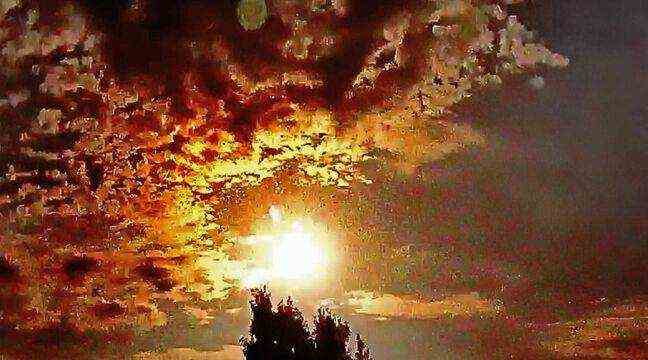Meteorite, shooting star or large, all-black pebble? Network scientists Rogue lookout affirmed on Monday that a meteor had crossed the sky of Brittany on Sunday evening. A conclusion made after having analyzed numerous testimonies and studied the videos of this racing car passed just above Brest. But seeing a meteorite and what is more, so close, it does not happen every day. In order to be sure not to miss the next time, Luc Labenne, meteorite specialist and founder of the company
Labenne Meteorites, explains how to recognize this flying stone.
How do you know that you have seen a meteorite and not a shooting star?
A shooting star is a fragment of a comet. When you see her, by the time you tell the person next to you, it’s already over! It is a white line that crosses the sky and lasts only a fraction of a second. A meteorite is a fragment of an asteroid. When you see one, you have time to warn your neighbor! It spins for several seconds and is particularly bright. Its light can even be a little colored and go from green to red. Some argue that it would depend on its composition.
What causes its so specific light?
In 95% of cases, a meteorite is made up of rock with some metal. When this asteroid fragment breaks away and its path meets that of the earth, it enters the atmosphere at a speed of 70 kilometers per second. There is then a phenomenon of friction and compression with the air which causes heating and this famous light that we can even see from very very far away. And if we are close enough, ten kilometers for example, we can perceive a sound. This is what some people in Brittany reported last night.
Can we see them at any time?
It’s not like shooting stars. There is no evidence today that there is a time of year or more favorable places to see a meteorite. It can happen anywhere and anytime, but it’s rarer than a shooting star. Depending on their brightness, we can even see them during the day.
Is it possible to find the meteorite that fell in Brittany?
Usually, you don’t come across a meteorite by chance. On the other hand, it happens when people have heard of it. They pay attention, learn and watch. The smaller they are, the less likely they are to be found. Often the ones that the lucky ones discover have a format between the size of a walnut and an apple. It’s much rarer to find bigger ones, but it does happen.
The ideal is to find it as quickly as possible, in the few days which follow its fall and especially before it rains. Terrestrial water could contaminate it while it potentially carries extraterrestrial water. It would lose valuable information for scientists.
How do you know if you’ve found a meteorite?
Since there has been a fusion, there is a thin, completely black crust on the fragment, much like a forgotten cake that would have burnt in the oven. If the meteorite broke on landing, the interior is often light and beige. This is a good clue. In terms of form, it is a fairly pleasant stone in the hand because the friction of the air when it arrives on earth has rounded all the angles. If you are in the middle of nature, it is likely that the fragment has sunk a little into the ground. If it’s in town, the meteorite may have left traces on the concrete or pierced a roof!
What to do when you think you have found a meteorite?
Lots of people send me pictures and I can tell pretty quickly if it isn’t. It is also possible to contact Vigie-ciel. Then, for a meteorite to be officially recognized as such, it must be analyzed. The National Museum of Natural History offers this expertise to individuals. The rule is that you must give 20% of the fragment found, without exceeding 20 grams. It is used enormously in the work of scientists as long as you are careful not to damage it. To prevent her from losing her information, you must avoid passing it from hand to hand and touching it too much. The best is to take it with a plastic bag and leave it there.

